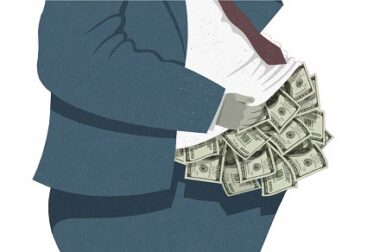The general idea of CoQ is that failure costs rise in a much steeper curve than prevention costs and that by investing in preventive measures you can minimize failure costs. The cost of poorquality comprises costs incurred due to bad practices, failures, andlow product quality. You can interpret costs of quality by the use of mathematical models called quality cost models. Optimizing the quality processes of a complete production line employs Dynamic Programming. Your business is transformed in many ways to reduce costs across every level of your manufacturing operations if the quality is embedded within every operation. With a quality manufacturing approach, the cost of quality initiatives become a powerful tool to improve return on investment.
How to Measure Cost of Quality (COQ)
This is where the concept of “Cost Of Quality” (COQ) proves valuable as a systematic means for understanding, calculating and optimizing the financial impacts of attaining and sustaining product or service excellence. They include Prevention, Appraisal, Internal Failure and External Failure. Within each of the four categories there are numerous possible sources of cost related to good or poor quality. They have a vested interest in the project and want to know how things are going. Whether it’s a status report, portfolio report or a report on cost or time, you can show them relevant data through reports in multiple formats. Keeping stakeholders happy is a type of quality you can never get enough of.
Training/Classes
Over three years, the company reported cost savings of over $100 million, attributable to improved quality and operational efficiencies. The transformative power of optimizing cost of quality is best illustrated through some examples and case studies from various industries. These savings can then be reinvested into further quality improvement initiatives, creating a virtuous cycle of continuous enhancement. The benefits of optimizing cost of quality extend far beyond mere financial considerations. Six Sigma methodologies, such as Define, Measure, Analyze, Improve, and Control (DMAIC) and Design for Six Sigma (DFSS), have proven highly effective in driving quality improvements across various industries. Where customers have an abundance of choices, quality is no longer a mere consideration – it’s a strategic imperative that can make or break a company’s bottom line, reputation, and long-term viability.
Cost of Quality in Examples
- These costs involve activities to detect and address any non-conformities or deviations from desired specifications.
- The result was a significant improvement in patient satisfaction scores, reduced readmission rates, and substantial cost savings through improved operational efficiency and reduced errors and rework.
- It is the role of your organization’s leadership to instill a culture of quality.
- Implement systems and procedures to continuously collect, update, and analyze COQ data.
- If you don’t produce non-conforming product in the first place, you don’t need to worry about your internal and external failure costs.
While many organizations claim to produce or deliver high-quality products and services, do they understand that it isn’t really free? While Quality is Free is the name of a popular quality book by Philip Crosby, he didn’t mean there was no cost to attain higher quality, but that the investment you make in improving quality will be returned quickly. Internal failure costs may include expenses related to scrap, rework, downtime, and the resources required for failure analysis and remediation. This free quality control template for Excel helps you log any quality management issues that affect your project. Describe quality issues, the date when they were found, who will be responsible for fixing them among other important details that you can then use as part of your COQ analysis. This way, you can minimize failure costs and appraisal costs by investing more in prevention.
What is the Cost of Poor Quality (CoPQ)?
Considering that a large portion of a company’s spend is relatedto the tax information for nonprofits, it is wise to measure it to make informedbusiness decisions. Implementing the Cost of Quality method will allow you to find ameasured balance between the price of your product and its quality. As a consumer, youprobably know that when comparing two similar products, the moreexpensive one usually comes out as the winner in terms ofquality and durability. Ask your insurance agent for options and loop in your financial adviser to create a plan to pay for it, insurance experts suggest. Talk to your insurance agent to check the home’s flood zone, wildfire, or earthquake risks.
Cost of Poor Quality
Finally, employ quality management tools and techniques to streamline COQ measurement. Most companies claim to produce or deliver high-quality products and services. Most do it the wrong way by focusing on catching rather than preventing. If you truly have a superior product or service, and your costs are lower due to your lowered COQ, you will have an advantage over your competition. Accurately and consistently measuring the cost of quality is a win-win for companies. It helps detect gaps in quality performance and identify essential areas for improvement.
Implement systems and procedures to continuously collect, update, and analyze COQ data. Regularly review and monitor the COQ metrics to track progress, evaluate the effectiveness of quality improvement initiatives, and identify emerging https://www.simple-accounting.org/ quality-related issues. Add the prevention, appraisal, and failure costs (internal and external) to derive the comprehensive COQ figure. These activities aim to ensure the app is high quality and meets customer requirements.
It’s also part of Lean Six Sigma, a philosophy of improvement built on the prevention of defects over defect detection. A company can reduce its external failures by asserting control over internal quality measures. When faced with external failures, acting quickly to rebuild customer relations can ease future losses. These costs are incurred in an effort to keep defective products from falling into the hands of customers. The Cost of Conformance is made up of Preventions costs and Appraisal costs.
Investing in the Cost of Good Quality does not necessarily mean that the overall Cost of Quality will increase. In fact, when the resources are invested in the right areas, the Cost of Quality should decrease. When failures are prevented / detected prior to leaving the facility and reaching the customer, Cost of Poor Quality will be reduced.
COQ is about money, time, and resources to ensure product or service delivery excellence. To effectively track and analyze quality costs, organizations must establish robust data collection and monitoring systems. Effective use and implementation of Cost of Quality methodology enables an organization to accurately measure the amount of resources being used for Cost of Good Quality and Cost of Poor Quality. With this valuable information the organization can determine where to allocate resources to improve product quality and the bottom line. To further illustrate the value of cost of quality, review the following example. The name of the company has been changed but the content represents actual events and results.
External Failure Costs are any cost incurred due to the failure of a product to meet a customer requirement where the non-conformance was detected after shipment to the customer. Internal Failure Costs are any cost incurred due to the failure of a product to meet a customer requirement where the non-conformance was detected prior to shipment to the customer. Appraisal costs are also considered an investment, not a loss, because you’re assuring that quality specifications have been met, and you’re preventing unnecessary failure costs, etc. What he’s saying here is that we should shift our focus from failures & appraisal, to prevention through improvement. The Total Quality Cost can be summarized as all investments in the prevention of defects, the testing of product to assure Quality, or the failure of a product to meet a customer requirement. This can build a stronger bond, more repeat orders, and better customer relationships.
In addition to the quantitative financial data, organizations should also establish and track relevant quality metrics and key performance indicators (KPIs). While the concept of cost of quality may seem straightforward, accurately quantifying and tracking these costs can be a complex endeavor. In an increasingly globalized and customer-centric business environment, the importance of cost of quality cannot be overstated. One important factor to note is that the Cost of Quality equation is nonlinear.
It provides you with the necessary insight to identify problemareas regarding the quality of your products and the costs related toit. Customers and clients have numerous options, which means businesses are held to higher quality standards than ever before. Finally we discussed the limitations of a COQ program which include the fact that a COQ program by itself does not lead to improvement.
A large healthcare provider embarked on a Lean Six Sigma initiative to address quality issues and operational inefficiencies in its patient care processes. Optimizing cost of quality often goes hand-in-hand with streamlining processes, reducing waste, and enhancing operational efficiency. This may involve establishing clear quality standards, conducting regular supplier audits and evaluations, and fostering collaborative relationships to drive continuous improvement throughout the supply chain. These may include measures such as defect rates, customer satisfaction scores, on-time delivery rates, and process capability indices.
The message was that preventive maintenance of your vehicle could prevent more costly repairs down the road. An organization can choose to invest in upfront quality costs to reduce or prevent failures or pay in the end when the defect is eventually discovered by the customer. Product failures can result in increased warranty costs and possibly even product recalls.
There are opportunities for improvement in processes at most organizations. It has been estimated that the Cost of Quality usually amounts to between 15-40% of business costs. The goal of implementing Cost of Quality methodology is to maximize product quality while minimizing cost. Cost of Quality methodology provides the detailed information that management needs to accurately evaluate the effectiveness of their quality systems, identify problem areas and opportunities for improvement. Prevention costs includes all those costs which are incurred for activities that are specifically designed to prevent poor product quality from happening in the first place. It is much less expensive to prevent a problem from happening than it is to find and correct the problem after it has occurred.Prevention costs are incurred for activities whose purpose is to reduce the number of defects.
Here is a chart showing some of the hidden costs of quality that most organizations aren’t aware of. Producing (and then catching and reworking) non-conforming products is more costly than producing it correctly the first time. Your customer will not pay you twice for the same product if you have to rework it or make another one. Below is a graphic showing the relationship of them along with the four common quality cost categories as defined by Feigenbaum. Famed quality expert Joseph Juran wrote about the concept of quality cost in his 1951 book titled Quality Control Handbook. By applying Lean principles and DMAIC methodologies, the organization streamlined workflows eliminated non-value-added activities, and reduced defects in processes such as medication administration and patient handoffs.
Let’s look at what we mean by COQ, the different elements of COQ, its benefits, and how to go about establishing your organization as a leader in quality products and services. These examples underscore the far-reaching impacts of optimizing the cost of quality, from tangible financial benefits to enhanced customer satisfaction, regulatory compliance, and competitive positioning. By eliminating defects and non-value-added activities, organizations can improve throughput, reduce lead times, and increase overall productivity, contributing to a leaner and more agile business model. The difference between these two terms is that they’re opposites that work together in terms of helping one figure out the dollar amount of creating a quality product or service. They do this by looking at the cost of producing quality and comparing that to the cost of paying for delivering a product or service of poor quality.






